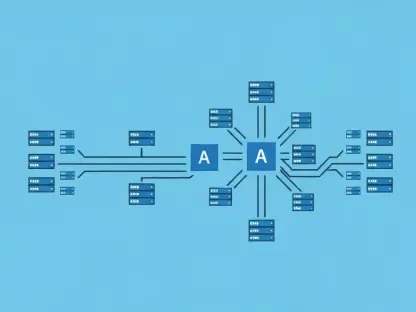Listen to the Article
AI agents are systems that work on their own. They take in information from their surroundings, decide what to do next, and act to reach specific goals. Using rules and learning tools, they adjust their choices based on what’s happening around them. Over time, they get better by learning from mistakes and successes, with little to no need for human help.
These AI agents could process information more efficiently, adapt decisions in real time, and operate at unprecedented scales, reducing reliance on human input.
Businesses are starting to use agentic AI more for complicated tasks, like improving healthcare services or building better software. These systems work by pulling data from different apps and tools. They can study problems, come up with solutions, and act on their own.
For example, in customer service, agentic AI doesn’t just reply to questions. It could look at a user’s unpaid bills, find accounts with enough money to pay them, and wait for the user’s okay before finishing the payment.
This move toward self-operating AI uses smart problem-solving and adjusts plans as needed. It lets AI handle multi-step jobs on its own. The goal? To boost productivity in fields like banking, tech, and healthcare by letting AI make smart choices instead of just following basic orders.
There’s a Divide
The world’s AI technology is growing quickly. Recently, Sam Altman (OpenAI), Masayoshi Son (SoftBank), and Larry Ellison (Oracle) stood with Donald Trump at the White House to announce Stargate—an AI project hailed as a precedent.
The group will start by spending $100 billion, with plans to reach $500 billion later. Big tech companies like Nvidia, Microsoft, Oracle, and Arm will help by providing fast computer chips, cloud systems, and software.
At a recent CES keynote, NVIDIA CEO Jensen Huang highlighted the transformative role of agentic AI, describing these systems as “AIs that can perceive, reason, plan and act.” And in addition to referring to them as “one of the most important things that’s happening in the world of enterprise”, Huang illustrated how agentic AI could tackle multi-step tasks: Working autonomously to retrieve data from storage, research online, analyze PDFs, run calculations, or generate charts using generative tools.
To some, this signifies a future where agentic AI is ubiquitous: Used by virtually every company to handle essential tasks with minimal human supervision.
To others, it seems like “putting the cart before the horse”. ITPro believes that it’s early to start relying on agentic AI, arguing that since businesses don’t fully trust generative AI in its current form, they shouldn’t give it more responsibility.
Trust in AI remains limited despite its growing adoption. While executives push for expanded use, only 30% of IT professionals trust AI to make decisions without human oversight. This skepticism is justified, as even tools designed to collaborate with humans frequently make errors, exposing flaws in current systems.
Yet, the industry continues prioritizing ambitious future projects over resolving today’s reliability gaps—a disconnect risking both progress and public confidence.
Where Should Your Organization Stand?
Don’t rush into agentic AI. Check if your basics are ready—like your IT infrastructure. Is it strong enough to handle systems that need data to work smoothly together and process info right away?
Equally vital is data quality. Agentic AI thrives on accurate, well-structured datasets. Garbage in, garbage out remains a hard truth. Next, consider workforce capabilities. Do teams possess the technical literacy to collaborate with AI, or will upskilling be necessary?
Using AI that can act on its own needs careful planning for tech, right-or-wrong choices, and everyday tasks. But don’t rush your decision. Take your time to think about the costs and if it’s truly helpful for your team.
Where to Start?
Since ROI is involved, it’s essential to understand that agentic AI shouldn’t be adopted merely as a novelty.
Begin by identifying operational challenges where autonomy-driven solutions could deliver tangible benefits. For instance, in logistics, AI might optimize inventory routing by anticipating disruptions, while in finance, it could autonomously detect compliance anomalies. Align these applications with core business objectives—reducing inefficiencies, elevating customer engagement, or mitigating risks.
Prioritize solving current hurdles over speculative future applications, ensuring adaptability as technology evolves.
Manage Risk
Autonomy introduces unique risks since even the most sophisticated AI can falter in unpredictable scenarios. Integrate safeguards, such as human oversight for critical decisions. Proactively address ethical concerns, including biased training data or opaque decision-making, which could undermine trust. Regularly audit algorithms for fairness and establish accountability protocols. Compliance with regulations is non-negotiable, particularly in regulated sectors like healthcare or finance, where AI missteps may incur legal consequences.
Scalability and Adaptability
Agentic AI requires ongoing iteration, not just a one-time setup, because it works best when adapting to new data, user needs, and tech changes. Companies should use modular architectures—like microservices or API-driven designs—to support incremental scaling.
By treating agentic AI as a living system (not a fixed tool), organizations keep their investments ready for the future while staying flexible. This strategy balances quick wins (e.g., using AI for repetitive tasks) with planning for advanced tech like embodied AI or self-improving algorithms.
Synergizing Human and AI Expertise
AI is changing how people work by helping, not replacing, them. Companies use AI to handle repetitive, data-heavy tasks like real-time analytics. This gives employees more time to focus on creative ideas and important projects that drive innovation.
It’s important to build a workplace where AI is seen as a helpful teammate. Training programs should teach employees how to work with AI while understanding the technical and ethical issues.
Feedback is also key. Employees need ways to give input so AI systems can improve over time. This helps AI stay useful and aligned with the company’s goals. It also makes employees feel like they’re part of the process, increasing trust and teamwork.
Conclusion
Agentic AI holds transformative potential, but its success depends on deliberate, context-sensitive adoption. Organizations must balance enthusiasm with prudence, anchoring decisions in readiness evaluations, ethical diligence, and human-AI collaboration. By prioritizing measurable impact overhype, businesses can position themselves not just as adopters, but as pioneers shaping AI’s responsible evolution.
The best way forward is to balance big goals with practical steps—a spot where new ideas can grow while still being responsible.









